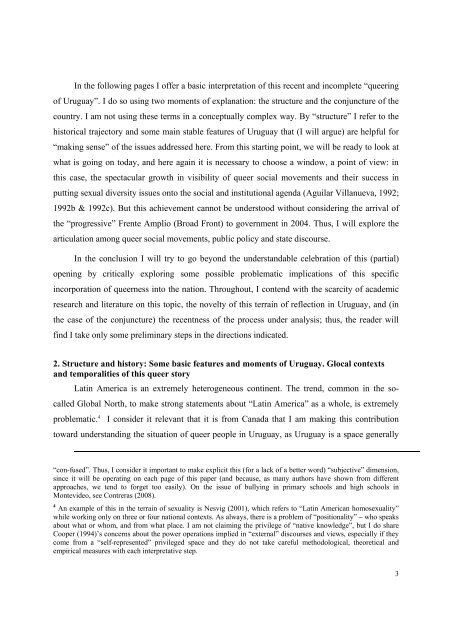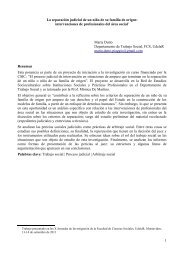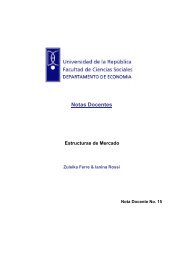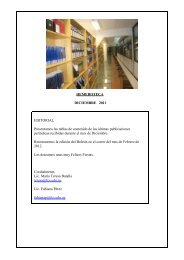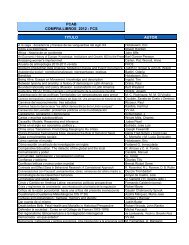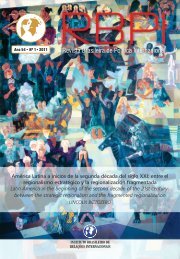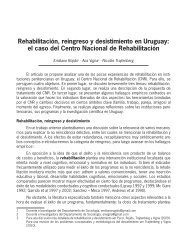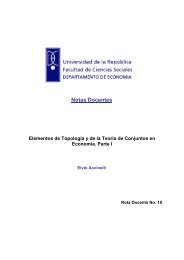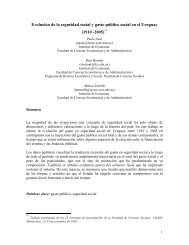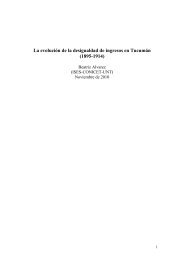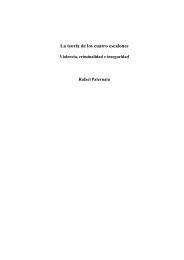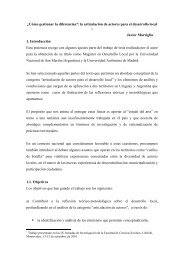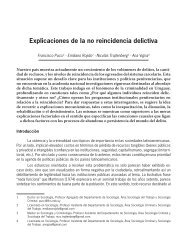Paulo Ravecca - Facultad de Ciencias Sociales
Paulo Ravecca - Facultad de Ciencias Sociales
Paulo Ravecca - Facultad de Ciencias Sociales
Create successful ePaper yourself
Turn your PDF publications into a flip-book with our unique Google optimized e-Paper software.
In the following pages I offer a basic interpretation of this recent and incomplete “queering<br />
of Uruguay”. I do so using two moments of explanation: the structure and the conjuncture of the<br />
country. I am not using these terms in a conceptually complex way. By “structure” I refer to the<br />
historical trajectory and some main stable features of Uruguay that (I will argue) are helpful for<br />
“making sense” of the issues addressed here. From this starting point, we will be ready to look at<br />
what is going on today, and here again it is necessary to choose a window, a point of view: in<br />
this case, the spectacular growth in visibility of queer social movements and their success in<br />
putting sexual diversity issues onto the social and institutional agenda (Aguilar Villanueva, 1992;<br />
1992b & 1992c). But this achievement cannot be un<strong>de</strong>rstood without consi<strong>de</strong>ring the arrival of<br />
the “progressive” Frente Amplio (Broad Front) to government in 2004. Thus, I will explore the<br />
articulation among queer social movements, public policy and state discourse.<br />
In the conclusion I will try to go beyond the un<strong>de</strong>rstandable celebration of this (partial)<br />
opening by critically exploring some possible problematic implications of this specific<br />
incorporation of queerness into the nation. Throughout, I contend with the scarcity of aca<strong>de</strong>mic<br />
research and literature on this topic, the novelty of this terrain of reflection in Uruguay, and (in<br />
the case of the conjuncture) the recentness of the process un<strong>de</strong>r analysis; thus, the rea<strong>de</strong>r will<br />
find I take only some preliminary steps in the directions indicated.<br />
2. Structure and history: Some basic features and moments of Uruguay. Glocal contexts<br />
and temporalities of this queer story<br />
Latin America is an extremely heterogeneous continent. The trend, common in the socalled<br />
Global North, to make strong statements about “Latin America” as a whole, is extremely<br />
problematic. 4 I consi<strong>de</strong>r it relevant that it is from Canada that I am making this contribution<br />
toward un<strong>de</strong>rstanding the situation of queer people in Uruguay, as Uruguay is a space generally<br />
“con-fused”. Thus, I consi<strong>de</strong>r it important to make explicit this (for a lack of a better word) “subjective” dimension,<br />
since it will be operating on each page of this paper (and because, as many authors have shown from different<br />
approaches, we tend to forget too easily). On the issue of bullying in primary schools and high schools in<br />
Montevi<strong>de</strong>o, see Contreras (2008).<br />
4 An example of this in the terrain of sexuality is Nesvig (2001), which refers to “Latin American homosexuality”<br />
while working only on three or four national contexts. As always, there is a problem of “positionality” – who speaks<br />
about what or whom, and from what place. I am not claiming the privilege of “native knowledge”, but I do share<br />
Cooper (1994)’s concerns about the power operations implied in “external” discourses and views, especially if they<br />
come from a “self-represented” privileged space and they do not take careful methodological, theoretical and<br />
empirical measures with each interpretative step.<br />
3


